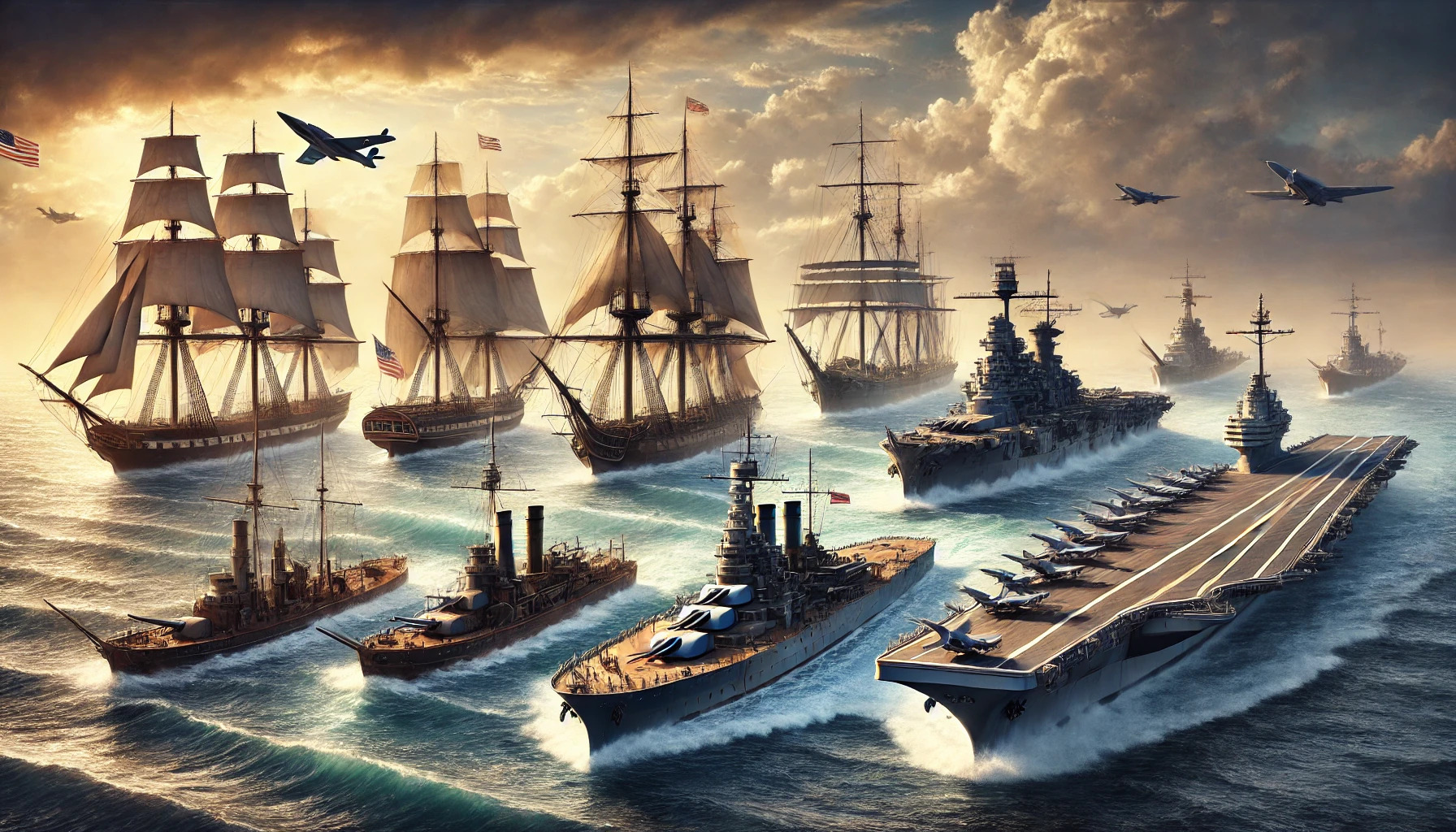Naval warfare has undergone dramatic transformations throughout history, driven by innovative technologies and strategies. From the introduction of steam power to the development of advanced navigation techniques, each new advancement has reshaped how battles are fought at sea. These naval innovations not only enhanced military effectiveness but also altered the very nature of maritime conflict.
Today, understanding how these changes occurred can offer valuable insights into both past and present naval strategies. Innovations like the transition from sail to steam power allowed fleets to maneuver more freely and with greater speed, fundamentally changing naval combat. By exploring key developments, readers can appreciate the ongoing evolution of naval warfare and its significance in shaping global events.
Engaging with the history of naval innovations reveals much about the interplay between technology and warfare. Each advancement tells a story of its time, reflecting the needs and challenges faced by nations at sea. Those interested in the evolution of military tactics will find that these innovations continue to influence modern naval operations today.
The Age of Sail
The Age of Sail was a crucial time in naval history, marked by advancements in ship design, armament, and navigation. These innovations transformed how nations fought at sea and expanded maritime exploration.
Ship Design and Armament
Ship design during the Age of Sail saw significant changes. Ships were crafted to be faster and more powerful. The introduction of larger hulls and improved materials allowed for better durability and speed on the water.
Naval battles relied heavily on heavy artillery. Each ship was equipped with cannons placed along the sides to maximize firepower. These advancements gave nations a considerable edge during conflicts at sea.
The use of specific types of ships, like frigates and ships of the line, became common. Frigates were faster and often used for reconnaissance, while ships of the line were heavily armed and crucial in battle formations.
Navigation and Ship Handling
Navigation techniques evolved greatly during the Age of Sail. Navigators relied on tools like compasses, astrolabes, and charts to guide their vessels. These tools improved their ability to sail vast oceans and explore new territories.
Understanding winds and currents became essential for effective ship handling. Sailors learned to read the weather and adjust sails accordingly.
Crew training focused on efficient maneuvering and teamwork. Knowledge of rigging and sail management was crucial for success. These practices ensured that ships could engage effectively in battles and reach their destinations safely.
Steam Power and Ironclads
The development of steam power during the Industrial Revolution transformed naval warfare. This innovation led to the rise of ironclads, warships that changed how battles were fought at sea.
Industrial Revolution Influence
The Industrial Revolution brought significant changes in technology and manufacturing. New steam engines allowed ships to move faster and navigate more easily, regardless of wind conditions.
This advancement made naval forces more powerful and versatile.
The combination of steam power with improved metalworking techniques led to stronger ship designs. These ships could withstand more damage than their wooden counterparts, making them crucial in naval battles.
The Emergence of Ironclad Warships
Ironclads emerged in the mid-19th century as a response to evolving warfare needs. These warships were armored with iron plates, offering greater protection against enemy fire.
The first widely recognized ironclad was the USS Monitor, launched in 1861, which showcased steam power effectively.
This type of warship was a game-changer, allowing navies to engage in battles without relying solely on sail power. Ironclads could easily defeat wooden ships, shifting the balance of naval power.
Submarine Warfare Development
Submarine warfare has transformed naval conflicts through key innovations and tactical advancements. This development has significantly altered how naval forces operate and engage in combat.
The Advent of Submarines
Submarines first emerged in the 17th century, but their military use began in earnest during World War I. The introduction of diesel-electric submarines allowed ships to operate both on the surface and underwater. This innovation enhanced their stealth and operational range.
By World War II, submarines became crucial in naval warfare. They were able to carry torpedoes and conduct surprise attacks. These vessels challenged surface fleets and changed the dynamics of military engagements at sea. The history of submarines reflects a continued progression in technology and tactics, shaping future naval strategies.
Advancements in Stealth and Attack Strategies
Modern submarines have made significant strides in stealth technology. The use of air-independent propulsion (AIP) systems enables submarines to remain submerged for extended periods. This capability enhances their stealth, making detection more challenging for enemy forces.
Attack strategies have also evolved with the integration of advanced sensors and automation. Submarines now use unmanned underwater vehicles (UUVs) to extend their reach and gather intelligence. Artificial intelligence plays a role in analyzing data, improving decision-making during missions. These advancements ensure submarines remain a vital aspect of naval warfare, capable of executing complex attack strategies effectively.
Naval Aviation and Carriers
Naval aviation and aircraft carriers transformed naval warfare in significant ways. The development of the aircraft carrier changed how battles were fought at sea. Additionally, advancements in jet technology have played a crucial role in enhancing modern naval air power.
The Invention of the Aircraft Carrier
The first aircraft carrier, the HMS Argus, was launched in 1918. It was designed specifically to operate aircraft at sea. This innovation marked a turning point in naval warfare, allowing ships to project air power from the ocean.
The concept of carriers quickly evolved during the interwar period. Commanders like Captain Reeves focused on establishing carrier warfare doctrine. These innovations became vital in World War II, showcasing the versatility of carriers. They changed naval strategies and demonstrated their importance in major battles, such as those in the Pacific.
Jet Technology and Modern Naval Air Power
The introduction of jet technology in the mid-20th century revolutionized naval aviation. Jets could fly faster and carry more payload than previous aircraft. This advancement enhanced the strategic capabilities of naval forces significantly.
Modern naval carriers now operate various jets, like the F/A-18 Super Hornet. These aircraft excel in multiple roles, including air superiority and ground attack. The combination of advanced technology and carriers allows navies to project power effectively around the globe, making them a cornerstone of modern military strategy.

